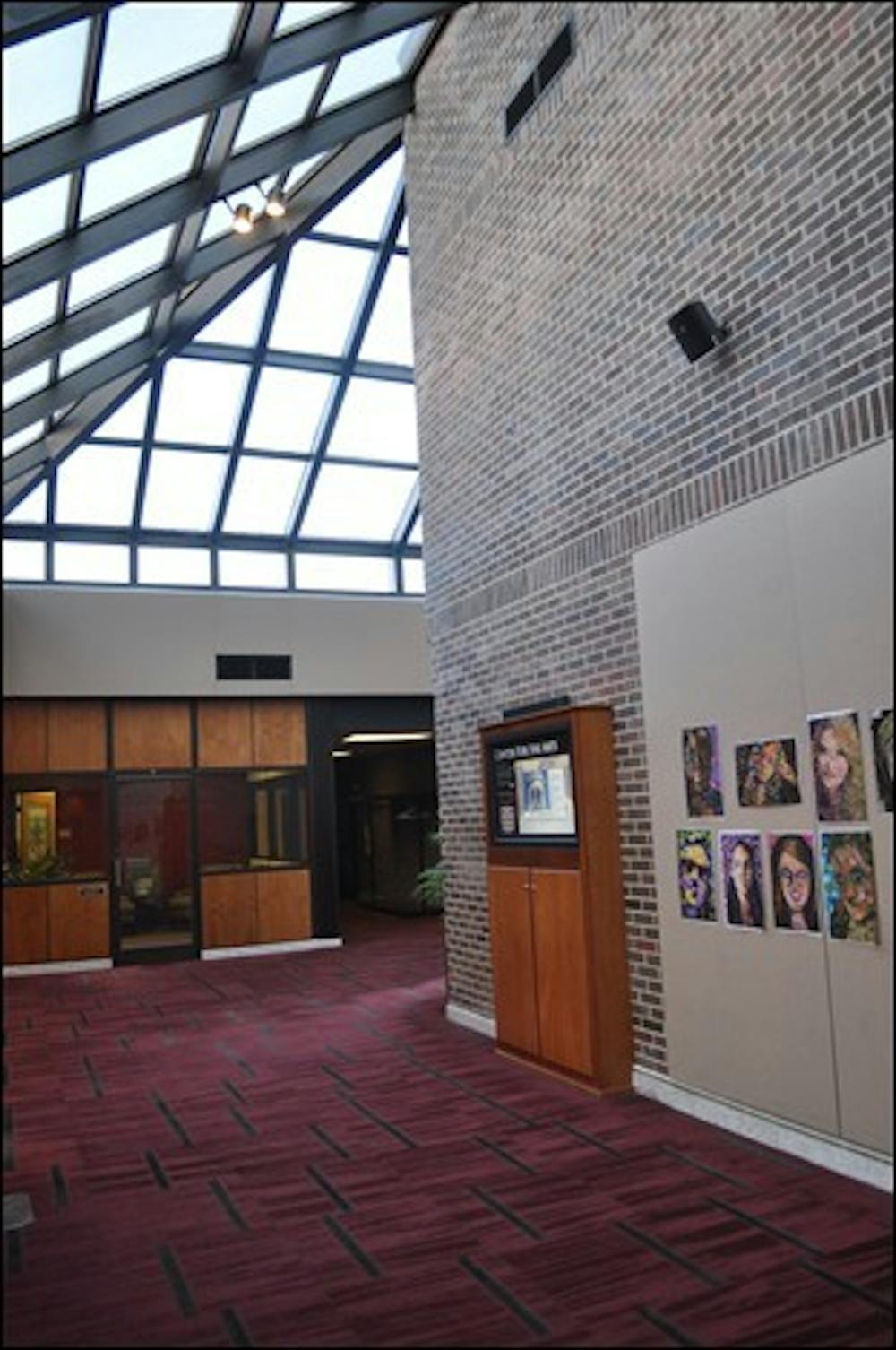Claps of thunder and cracks of lightning, coupled with the patter of a gentle rain were heard next to McCrary Theatre Nov. 28-Dec. 2, but the weather outside Elon University's Center for the Arts was warm and bright.
Students in associate professor Samantha DiRosa's Time Arts course created compilations of natural and artificial sound as part of a student soundscapes exhibition.
"Students engage in field recording activities and then use them to weave together a sound tapestry to explore the nature of place from a metaphorical, auditory perspective," DiRosa said.
The assignment, typically completed at the end of the semester, challenges students to discover the impact of sounds and their role in society.
Similarly, the course explores the fourth dimension in art: time and space. DiRosa said the course investigates the potential for art in unexpected spaces and explores processes that unfold over time, using media such as video, audio, installation art, photography and performance art.
"The course draws a mixture of students from art majors and non-art majors looking to satisfy expression credit as well as students exploring the art or digital art minor," she said. "It dovetails nicely with disciplines like communications, theater, philosophy and environmental studies, among others."
Exploring the depth of sound in everyday life was a major component of the class.
"The first step was just observing, which we did in the beginning of the year," said freshman Morgan Mayer. "Going out into the world and really listening is something that when you put focus on it, it becomes an identity in itself, it's something that we take for granted so much, the sense of hearing."
Appreciating the ability to hear natural and manufactured sounds gave students a new perspective. It also encouraged them to understand the process of weaving together sounds to create music.
"We watched a documentary on the creation of 'Wall-E,'" Mayer said. "We learned if you hang a slinky from the ceiling and you hit the bottom with a pen, you get a 'woosh' sound that was used when the spaceship took off, and was the same sound for the lightsabers in 'Star Wars.'"
By learning to generate sounds using nontraditional media, students were able to create their own unique soundscapes.
"We went out and recorded a lot of sound," she said. "Everything from College Coffee, to buses, to bicycle chains and we created our own sounds. I took a glass of water and moved it from one cup to another and looped it. I also recorded a sink dripping in Danieley Center."
Mayer's sounds of moving water evolved into the full-fledged thunderstorm she showcased last week.
"In the same way I realized I had taken sound for granted," Mayer said. "When people hear the thunderstorm, the first thing they're going to do is look outside, and when they see it's sunny out, people will really think about what they're hearing and how it doesn't correspond to what they're seeing."
All of the soundscapes were created differently. Junior Alexa Behar created a nontraditional piece featuring screams, screeching sneakers and keyboard clicks.
Both natural sounds and unconventional pieces were played in the Center for the Arts, with the help of DiRosa and Rick Earl, technical director for cultural and special programs.
"It engages the space and the speaker system in ways other than it was originally designed," DiRosa said. "Ideally it gets people to disrupt their usual autopilot ways of moving through the space, and inspires them to stop and listen."


